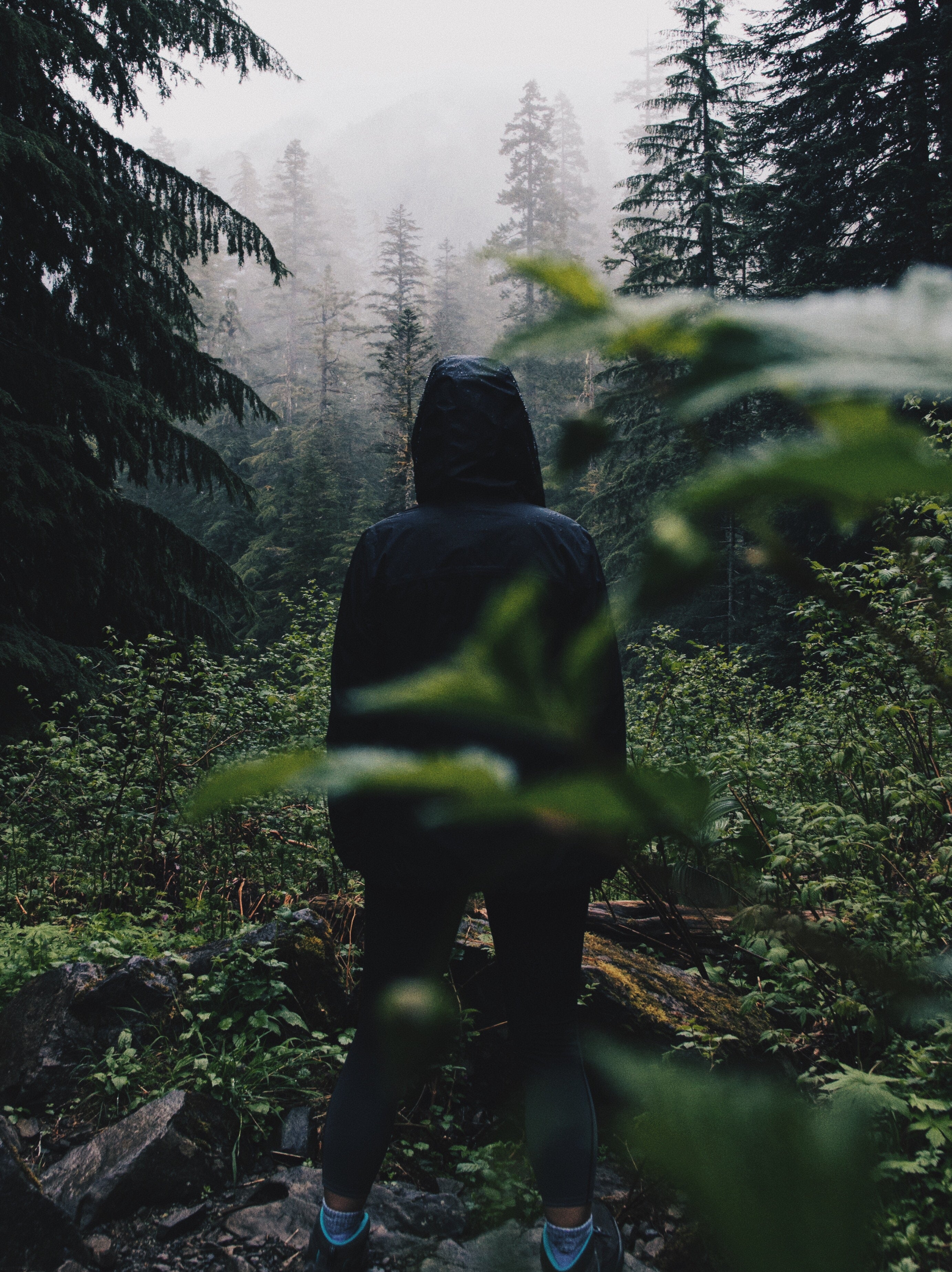Stay Dry on the Trail

'Andrew Spencer'
Choose the Right Layers
1. Avoid cotton like the plague. Pack synthetic baselayers, a featherless puffy for insulation, and a rainjacket to stay dry.
2. Don’t over-insulate. What you really need to do is stay dry, and over-layering will make you sweat.
3. Bring an extra base-layer. If you know you’re going to sweat on your approach, you’ll want dry layers to change into.
4. Know what kind of athlete you are. What’s more important to you, being comfortable, or packing ultralight? Choose your layers accordingly.
Choosing a Shell
1. Don’t skimp on these key features: unlined cuffs (read: no wicking) that cover your wrists and cinch tight with Velcro; a three-way adjustable hood with bendable brim for better protection and visibility; and a cinch-able hem that covers your butt.
2. You want a jacket with cuff s that are comfortable and adjustable, so you can seal out rain from running up your arms.
Wearing a Shell
1. If you see clouds rolling in, don’t wait for the rain to put on your waterproof layers. Put them on right away.
2. Avoid raising your arms. In a downpour, water will enter at your cuffs and seep up your sleeves. Shorten trekking poles to minimize wrist exposure.
3. Transform your jacket into a vest by sticking your arms out of the pit zips if conditions allow.
Venting a Shell
1. Limiting perspiration is critical to comfort and staying dry, and helps membrane performance. It’s best to stay slightly cool when hiking in rain, so layer down, slow down, and use zippers and vents to release body heat.
2. Wear a wicking base layer to pull the moisture off your skin so the membrane can release it as vapor.
Drying Out
1. Assess your comfort and the conditions when you have about 30 to 60 minutes of hiking left. Overheated? Slow down, so you start drying on the trail and don’t reach camp with sweaty (read: cold) inner layers.
2. Tap body heat. Dry wet socks and gloves while you hike. Stow them between your layers, not balled up in a pocket.
3. Keep warm with après-hike chores. It will give your clothes extra time to dry before you relax.
Stay dry in the wettest conditions with Marmot’s EVODry – rainwear reinvented at the molecular level. www.marmot.com